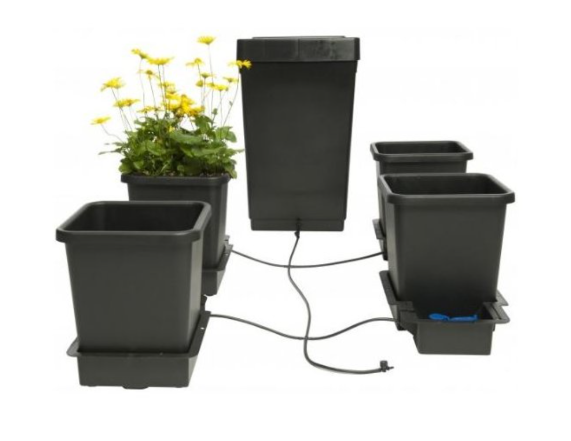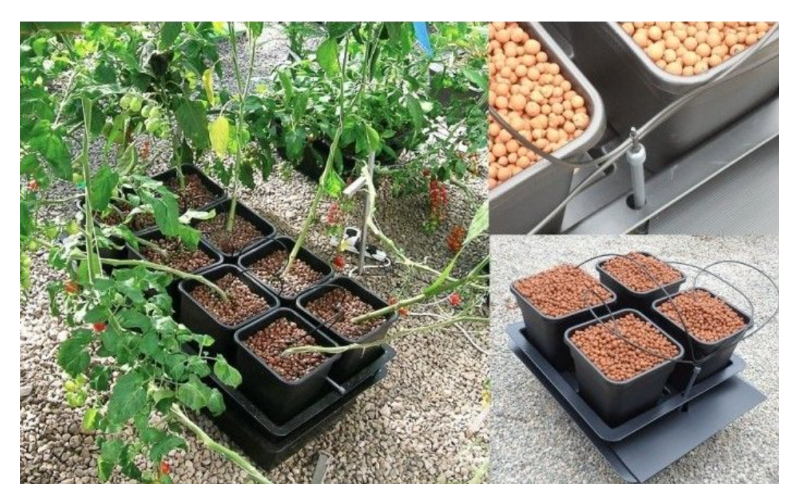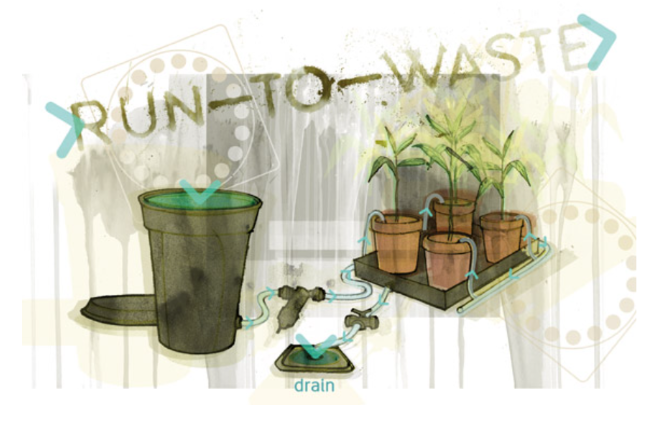Hydroponics is a modern and clean method of growing plants without soil in a nutrient solution. Simply put, you only need the plant, nutrient solution and a growing medium (clay pebbles, coco coir substrate, perlite) to anchor the plant. Cultivating is simple and effective with a hydroponic system, but the modern market offers many options, which might be overwhelming for a beginner. Today, we will discuss the pros and cons of different systems and methods to make it a bit easier.
Hydroponic plant cultivation is quite popular among growers. And it's no wonder. To illustrate, these are the main advantages of hydroponics:
- You get absolute control over the nutrition
- Incredible effectivity and yields
- If done right, hydroponic cultivation is a very pure method which means:
- Lower risk of plant disease or pests
- Much less messy than methods which use soil
Ordinary soil contains many organic and inorganic compounds used by plants to grow without having to rely heavily on fertilisers. Hydroponic growing media is inert and doesn't serve as anything but support.
The hydroponic media which bear the best results for growers are:
In the past, perlite was used as well, but it's not one of the best options. Most growers don't use it anymore.
It's important to pay close attention when picking the rooting medium or rooting cube. For example, Jiffy tablets aren't the best option for hydroponics because they have impurities which clog pumps and pipes. On the other hand, our professionals unanimously recommend using rock wool cubes (especially the ones by Grodan) as the best option for starting your hydroponic garden.
All the above-mentioned media are inert - they don't contain any nutrients - and everything the plant needs for healthy growth has to come from the nutrient solution. The nutrient solution is water enriched with nutrients sourced from high-quality hydroponic fertilisers.
The unifying characteristic of all hydroponic fertilisers is that they supply mineral-based nutrients. However, more and more growers favour bioponics - hydroponic cultivation, which uses only special organic fertilisers by Terra Aquatica.
Besides the legendary Terra Aquatica (previously known as General Hydroponics), we highly recommend Shogun fertilisers. You can learn more about the brand and products in this article: SHOGUN: UK's best fertilisers with an emphasis on research.
What should every grower think through when they're considering hydroponic cultivation? Answering these questions will help you set a goal.
- What's your budget?
A smaller budget will suffice for the very beginning when you're still figuring out the basic rules of hydroponics on a few plants. If this is your case, we recommend passive hydroponic systems. More money can buy you a sophisticated hydroponic system which uses electricity and other accessories for effectiveness and larger crops. We will describe the basic types of these systems below.
- How much time and effort are you prepared to invest in your garden?
Hydroponic cultivation needs more than just regular watering. You'll hardly get the beautiful, rich flowers and tasty fruit everyone keeps talking about if you don't regularly measure and adjust the EC (electric conductivity) and pH levels in the nutrient solution or let the temperature fluctuate.
Maintenance and regular cleaning are vital, especially for more complicated systems.
TIP: Smaller systems are prone to temperature, EC and pH fluctuations. The bigger the tank is, the better.
- Which plants are you going to grow, and how many do you want?
Your answer will determine how big your grow tent will be, which accessories will you need for it and what size of hydroponic system you should pick.
Generally, we divide hydroponic systems into active and passive.
Passive hydroponic systems (like the popular AutoPot 1Pot system in the picture below) don't need any electricity to work because they don't have any switches or pumps. They operate purely using the gravitational pull inside the tank. Passive systems are the ideal choice for beginners who want to try out hydroponics for the first time on several smaller plants.
Pros:
- low purchasing price
- negligible operating and maintenance costs
Cons:
- no advanced options for dosing or timing irrigation
- suitable only for growing on a small scale
- not automated

Recirculating hydroponic systems (like the Atami Wilma in the picture below) allow you to have total control over the whole growing process, from timing the irrigation to optimising the nutrient supply. An indisputable advantage of these active hydroponic systems is that they use a pump, which automatically waters the plants according to the schedule, even if you're gone for several days. To be fair, the pump's power consumption is one of its cons. However, the systems prove to be a good investment because of their power efficiency and subsequent high yields.
Pros:
- effective use of fertiliser
- full control over the growing process
- automatic operation
- long lifespan
- compatibility with more growing media
Cons:
- high purchase price
- high operation costs and power consumption
- more demanding on maintenance and cleaning

Run2waste systems (also called run-to-waste or RTW) are very simple hydroponic systems. As the name suggests, irrigation is applied until it runs out of the root zone into the waste tank, where it gets discarded. Unlike passive systems or recirculating systems, which add the nutrient solution until it's used up, run-to-waste systems need drainage and waste pipes.
Pros:
- safer for the plants - lower risk of diseases or circulating a spoiled nutrient solution
Cons:
- higher operating costs
- high water consumption

We will be adding separate articles on NFT, Ebb&Flow and drip systems, so stay tuned.
Undisputably, the most effective cultivation method is aeroponics. It also brings the highest risks, especially in the case of a power outage - all the pumps will stop working, and the entire crop will die. In aeroponics, the roots hang freely in the air and absorb nutrients from the fine mist of nutrient solution. In these systems, the roots are aerated, healthy and in constant contact with water and nutrients, which is what makes this method so effective.
These are the basic types of hydroponic systems and the absolute basics of hydroponic cultivation. If you truly want to try this method, be prepared to learn constantly and, most importantly, keep an open mind. If something doesn't work out, don't hang your head - contact us at info@higarden.eu instead. We will gladly discuss any problems you might run into and help you improve and grow the crop of your dreams.
